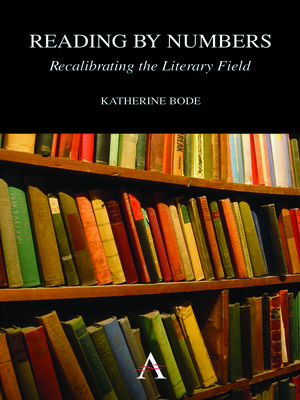Reading by Numbers
ebook ∣ Recalibrating the Literary Field · Anthem Scholarship In the Digital Age
By Katherine Bode

Sign up to save your library
With an OverDrive account, you can save your favorite libraries for at-a-glance information about availability. Find out more about OverDrive accounts.
Find this title in Libby, the library reading app by OverDrive.



Search for a digital library with this title
Title found at these libraries:
| Library Name | Distance |
|---|---|
| Loading... |
'Reading by Numbers: Recalibrating the Literary Field' is the first book to use digital humanities strategies to integrate the scope and methods of book and publishing history with issues and debates in literary studies. By mining, visualising and modelling data from 'AustLit' – an online bibliography of Australian literature that leads the world in its comprehensiveness and scope – this study revises established conceptions of Australian literary history, presenting new ways of writing about literature and publishing and a new direction for digital humanities research. The case studies in this book offer insight into a wide range of features of the literary field, including trends and cycles in the gender of novelists, the formation of fictional genres and literary canons, and the relationship of Australian literature to other national literatures.
|'Reading by Numbers: Recalibrating the Literary Field' proposes and demonstrates a new digital approach to literary history. Drawing on bibliographical information on the Australian novel in the AustLit database, the book addresses debates and issues in literary studies through a method that combines book history's pragmatic approach to literary data with the digital humanities' idea of computer modelling as an experimental and iterative practice. As well as showcasing this method, the case studies in 'Reading by Numbers' provide a revised history of the Australian novel, focusing on the nineteenth century and the decades since the end of the Second World War, and engaging with a range of themes including literary and cultural value, authorship, gender, genre and the transnational circulation of fiction. The book's findings challenge established arguments in Australian literary studies, book history, feminism and gender studies, while presenting innovative ways of understanding literature, publishing, authorship and reading, and the relationships between them. More broadly, by demonstrating critical ways in which the growing number of digital archives in the humanities can be mined, modelled and visualised, 'Reading by Numbers' offers new directions and scope for digital humanities research.







